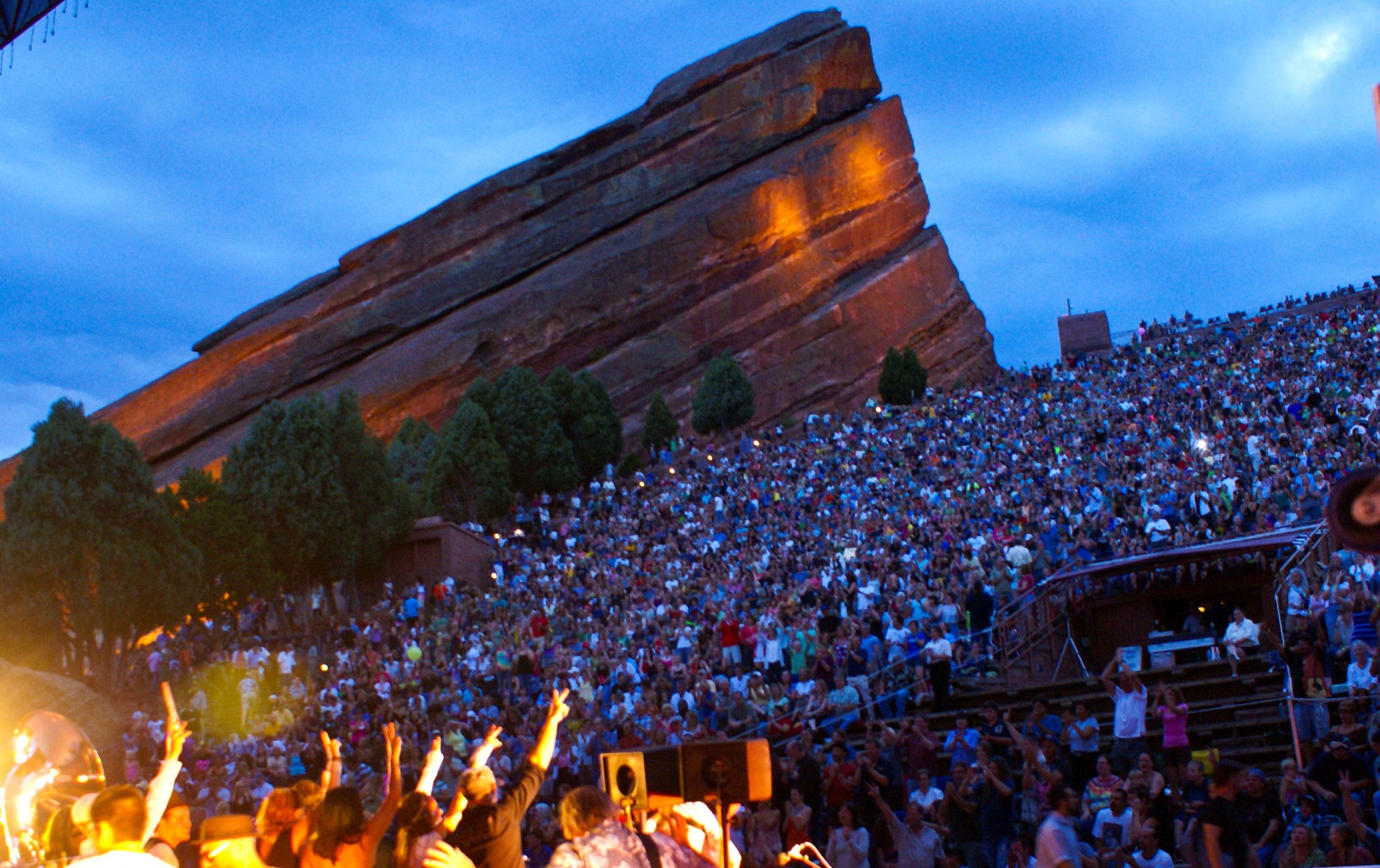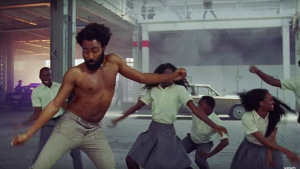If you search for “This Is America” on Twitter, you find not only a gushing river of well-deserved praise for Donald Glover’s new work, which has quickly become the most talked-about music video of recent memory. You also find Trump supporters using the moment to spread their messages. The hashtag #ThisIsAmerica sits next to a rant about the deep state. It sits next to a sneering meme about Hillary Clinton. It sits next to a picture of white pioneers, shared by a “European rights activist,” who says, “Most of the people who built America looked like this.”
Trending hashtags get hijacked by unsympathetic causes as a matter of course, but Glover knew what he was getting into with the name “This Is America.” The defining of a nation is the essential task of politics, and Glover’s definition has now been made clear. America is a place where black people are chased and gunned down, and it is a place where black people dance and sing to distract—themselves, maybe, but also the country at large—from that carnage. America is a room in which violence and celebration happen together, and the question of which one draws the eye is one of framing, and of what the viewer wants to see.
As he acknowledged in his Saturday Night Live monologue this past weekend, Glover has been much hyped as a “triple threat” entertainer: actor (on Community and in the upcoming Star Wars installment), musician (under the name Childish Gambino, Grammy-nominated in 2017 for Album of the Year), and filmmaker (behind the ultra-acclaimed dramedy Atlanta). “This Is America” brings those careers together, but more intriguingly, it highlights Glover’s specific assets—his physical performance chops, his conceptual vision, and his perceptiveness about his own fame. The message here is not an unfamiliar one, extending a tradition—spanning “The Revolution Will Not Be Televised” to Get Out—of interrogating the relationship between entertainment, race, and racism. But the searing and idiosyncratic way that message is delivered comes off as specific to Glover.
On Atlanta, Glover’s facial expressiveness and his bodily limberness get sidelined—his character, Earn, is glassy-eyed and repressed—but for “This Is America,” those traits enable a wildfire shirtless dance routine. The video’s version of Glover more recalls Troy on Community, a washed-up quarterback whose personality is a binary set of defeated deadpan and happy-go-lucky exaggeration. For “This Is America,” Glover intermittently bugs his eyes and freezes his form. Or he goes liquid, pulsating his shoulders as if they’re the gills of a beached fish. At the start, he contorts his body into a goofy squiggle as he shoots a gun into the back of a man’s head. His pose resembles the canonical caricature of Jim Crow.
The music itself is more art collage than song, its tunefulness a means rather than an end. Over a bustle of merry chants, foreboding bass, and James Brown yowls, Glover paraphrases the mode of popular hip-hop. Trending rappers drop by with their signature adlibs—“skrrt, skrrt” goes Slim Jxmmi—and Glover strings together keywords: party, money, cops. The video clarifies the semi-satirical meaning here. Glover and a troupe of school kids perform choreography derived from viral videos and historical images of black performance, and Hiro Murai’s camera follows them often at an unnervingly indifferent midrange distance (Murai is one of Glover’s chief collaborators on Atlanta). A frenzy of pursuits, riots, and shootings unfolds in the margins. The song and dance routine is partly a respite from, and partly an accompaniment to, the chaos.
In this, Glover certainly isn’t the first artist to suggest that black popular entertainment can simultaneously work as minstrelsy, appeasing a racist system, and as a gas valve of joy for people crunched by that system. Nor is he the first to describe the psychic tax of this state of affairs, seen both when Glover’s character wearily lights a joint and when, in some other space that may well signify his subconscious, he runs in terror from a white mob. But Murai’s eye and staging and Glover’s performance are together so stylish and surreal that the message is made newly raw. Jarring use of empty space, contrast, and timing keep every frame stark and alive.
Still, the response has been remarkable. Instant acclaim arrived not only from the hip-hop world, but also from pop and rock stars like Lady Gaga and Trent Reznor, the latter of whom broke a Twitter silence to rave about having watched the video five times in a row. Such plaudits almost necessarily add another meta dimension to the video, and to Glover’s evolving public image. In his early, unwieldy Childish Gambino songs, he worked through the confusion of being “the only black kid at a Sufjan concert,” which is to say, a black kid who gravitated to white hipster spaces. Atlanta and his 2016 funk album dramatically redrew that picture, but still he’s often spoken about in odd ways. “He is the prototype for people like me who find the Drakes and Michael B. Jordans of the world a little too clean-cut and remain unmoved by the bad-boy swagger of rappers like Future and Travis Scott,” wrote Sesali Bowen in a controversial New York Times piece on “The New Black Hotties.”
That Glover has been held up as a figure of contrast, of in-between-ness, may have given him the sense of perspective—or rather, the sense of being watched—that makes “This Is America” so potent. But it will also invite sharp questioning, like about whether he is criticizing the rap tropes his song invokes, or overly implicating black people in their own suffering. After all, it is he, not a white person, who pulls the trigger on the man at the beginning, and later, on a gospel group. But it seems safe to say he’s not here to scold. “Y’all are forgetting what rap is,” he told The New Yorker recently. “Rap is ‘I don’t care what you think in society, wagging your finger at me for calling women “bitches”—when, for you to have two cars, I have to live in the projects.’”
Similarly, some viewers have objected to the violence on-screen as sensationalistic use of real traumas. The counterargument would be that the casualness with which Glover guns down a church choir, echoing the massacre in Charleston, is exactly the point. The viewer may well be triggered by the sight—or they may, like the song, not lose a beat. Glover’s work here, as often in his career, is partly about its own reception. Whether in the way he widens his eyes or pastes on his grin, he conveys total awareness that his image is not entirely his own, and that America will inevitably use it, and misuse it.
# # # # #
Childish Gambino Drops Surreal New Video ‘This Is America’


